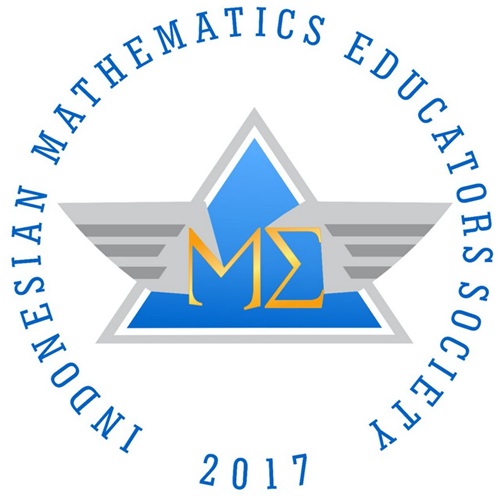The The Augmented Reality Learning Media to Improve Mathematical Spatial Ability in Geometry Concept
DOI:
https://doi.org/10.22437/edumatica.v12i01.17615Keywords:
Augmented Reality, development learning media, mathematical spatial ability, virtual geometryAbstract
This study aims to develop an augmented reality (AR) learning media to improve the mathematical spatial ability of junior high school in geometry material. The method used in this study is a research and development method by following the steps of level 3 development. In this study, the product developed was augmented reality learning media. Data collection techniques are unstructured interviews, questionnaires and tests with information sources from mathematics education lecturers, two junior high school teachers as material validators and informatics engineering lecturers as media validators. The data analysis technique in this study used descriptive qualitative analysis. The research instrument used a learning outcomes questionnaire, geometry learning outcomes test, and documentation. The results showed that the development of augmented reality as a learning medium can be used to have a positive influence on the effectiveness of lessons in the classroom. But on the other hand, the weakness of augmented reality media is that students must use a minimum Android-based smartphone device and have a camera in it. The study results obtained are to produce AR learning media that can improve mathematical spatial abilities.
Downloads
References
Ahmad, N. I. N., & Junaini, S. N. (2020). Augmented Reality for Learning Mathematics: A Systematic Literature Review. International Journal of Emerging Technologies in Learning, 15(16), 106-122. https://doi.org/10.3991/ijet.v15i16.14961
Auliya, R. N., & Munasiah, M. (2020). Augmented Reality Affects Students’ Attitude and Conceptual Understanding in Learning 3D Geometry. JPI (Jurnal Pendidikan Indonesia), 9(2), 203. https://doi.org/10.23887/jpi-undiksha.v9i2.17480
Cabero-Almenara, J., Barroso-Osuna, J., & Martinez-Roig, R. (2021). Mixed, augmented and virtual, reality applied to the teaching of mathematics for architects. Applied Sciences (Switzerland), 11(15), 33-49. https://doi.org/10.3390/app11157125
Coimbra, M. T., Cardoso, T., & Mateus, A. (2017). Augmented Reality: An Enhancer for Higher Education Students in Math’s Learning? Procedia Computer Science, 67(5), 332-339. https://doi.org/10.1016/j.procs.2015.09.277
Creswell, J. W. (2014). Research Design: Qualitative, Quantitative, and Mixed Method. In Research design Qualitative quantitative and mixed methods approaches. https://doi.org/10.1007/s13398-014-0173-7.2
Del Cerro Velazquez, F., & Mendez, G. M. (2021). Application in augmented reality for learning mathematical functions: A study for the development of spatial intelligence in secondary education students. Mathematics, 9(4), 1-19. https://doi.org/10.3390/math9040369
Elsayed, S. A., & Al-Najrani, H. I. (2021). Effectiveness of the Augmented Reality on Improving the Visual Thinking in Mathematics and Academic Motivation for Middle School Students. Eurasia Journal of Mathematics, Science and Technology Education, 17(8), 1-16. https://doi.org/10.29333/ejmste/11069
Freitas, R., & Campos, P. (2018). SMART: a SysteM of Augmented Reality for Teaching 2nd Grade Students. People and Computers XXII Culture, Creativity, Interaction 22, 4(2), 17-30. Retrieved from http://ewic.bcs.org/content/ConWebDoc/21393
Hamzah, M. L., Ambiyar, Rizal, F., Simatupang, W., Irfan, D., & Refdinal. (2021). Development of Augmented Reality Application for Learning Computer Network Device. International Journal of Interactive Mobile Technologies, 15(12), 47-64. https://doi.org/10.3991/ijim.v15i12.21993
Kaufmann, H., & Schmalstieg, D. (2017). Mathematics and geometry education with collaborative augmented reality. Computers and Graphics (Pergamon), 27(3), 339-345. https://doi.org/10.1016/S0097-8493(03)00028-1
Moreno, L. A. H., Solórzano, J. G. L., Morales, M. T. T., Villegas, O. O. V., & Sánchez, V. G. C. (2021). Effects of using mobile augmented reality for simple interest computation in a financial mathematics course. PeerJ Computer Science, 7(8), 1-33. https://doi.org/10.7717/peerj-cs.618
Mills, P. W. A. (2012). Educational Research: Competencies for Analysis and Applications. New York: Routledge
Nasrudin, N. H., Azfar, M. H., Hatta, M., Azmi, A. Z., & Junid, R. A. (2021). Mobile Application: Learning Basic Mathematics Operation using Augmented Reality. Mathematical Sciences and Informatics Journal, 2(1), 9-20. Retrieved from http://www.mijuitmjournal.com
Ozcakir, B., & Cakiroglu, E. (2021). An augmented reality learning toolkit for fostering spatial ability in mathematics lesson: Design and development. European Journal of Science and Mathematics Education, 9(4), 145-167. https://doi.org/10.30935/SCIMATH/11204
Pujiastuti, H., Haryadi, R., & Arifin, A. M. (2020). The development of Augmented Reality-based learning media to improve students’ ability to understand mathematics concept. Unnes Journal of Mathematics Education, 9(2), 92-101.
Robert, P. (2020). Design of the subject matter about analytical geometry based augmented reality. Journal Basic of Education, 3(2), 96-103.
Schmalstieg, D., Kaufmann, H., Reitmayr, G., & Ledermann, F. (2020). Geometry Education in the Augmented Classroom. Proc. {ISMAR} 2020, 4(3), 22-39.
Schutera, S., Schnierle, M., Wu, M., Pertzel, T., Seybold, J., Bauer, P., … Krause, M. J. (2021). On the potential of augmented reality for mathematics teaching with the application cleARmaths. Education Sciences, 11(8), 45-58. https://doi.org/10.3390/educsci11080368
Su, Y.-S., Cheng, H.-W., & Lai, C.-F. (2022). Study of Virtual Reality Immersive Technology Enhanced Mathematics Geometry Learning. Frontiers in Psychology, 13(February), 1-8. https://doi.org/10.3389/fpsyg.2022.760418
Suzanna, S., & Gaol, F. L. (2021). Immersive Learning by Implementing Augmented Reality: Now and The Future. Journal of Computer Science and Visual Communication Design, 6(1), 22-28. Retrieved from https://journal.unusida.ac.id/index.php/jik/article/view/402
Thamrongrat, P. (2021). The Effectiveness of Augmented Reality with Gamification in Learning 3D. Journal for Research in Mathematics Education, 3(April), 11-24.
Vakaliuk, T. A., Shevchuk, L. D., & Shevchuk, B. V. (2020). Possibilities of using AR and VR technologies in teaching mathematics to high school students. Universal Journal of Educational Research, 8(11B), 6280-6288. https://doi.org/10.13189/ujer.2020.082267
Voronina, M. V., Tretyakova, Z. O., Krivonozhkina, E. G., Buslaev, S. I., & Sidorenko, G. G. (2019). Augmented reality in teaching descriptive geometry, engineering and computer graphics-systematic review and results of the russian teachers’ experience. Eurasia Journal of Mathematics, Science and Technology Education, 15(12), 1-17. https://doi.org/10.29333/ejmste/113503
Wahyudi, U. M. W., & Arwansyah, Y. B. (2019). Developing Augmented Reality-based Learning Media to Improve Student Visual Spatial Intelligence. Indonesian Journal of Curriculum and Educational Technology Studies, 7(2), 89-95. https://doi.org/10.15294/ijcets.v7i2.36039
Yingprayoon, J. (2015). Teaching Mathematics using Augmented Reality. Proceedings of the 20th Asian Technology Conference in Mathematics, 20, 384-391.
Downloads
Published
How to Cite
Issue
Section
License
Copyright (c) 2022 Wanda Nugroho Yanuarto, Agung Muhammad Iqbal

This work is licensed under a Creative Commons Attribution-NonCommercial-ShareAlike 4.0 International License.







